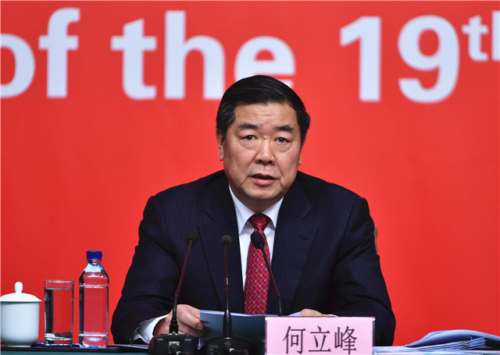This Week in China’s History: July 25, 1894
The 19th century was not a good one for Qing China. Invasion from abroad, rebellion from within, economic depression, and demographic tumult were just some of the crises besetting the empire. More than once, collapse seemed imminent. Yet as the century entered its last decade, the Qing dynasty, against the odds, was still in power.
The audience of Lord Macartney with the Qianlong Emperor is a convenient marker for the advent of China’s grim 19th century. The British diplomat didn’t cause China’s crisis, but his mission shows, in retrospect, a transition from the High Qing toward the “Century of Humiliation.” Another Englishman, much less well known, was present at century’s end, witness to an event that marked (though it didn’t cause) the closing of one era and the start of another.
Captain Thomas Galsworthy was in command of the S.S. Kowshing, a 2,100-ton steamship owned and operated by the Indo China Steam Navigation Company, a subsidiary of the notorious conglomerate Jardine Matheson, which had made a fortune in China trading opium in addition to tea, cotton, silks, and other goods. On July 25, 1894, the Kowshing was not carrying any of these commodities: About 1,100 Qing soldiers were aboard, en route to Korea, where they were to support the ruling dynasty against an expansive peasant rebellion.
China was not alone in its interest in Korea. Japan, swept up in the same expansion of Western commercial empires as China, was realigning its foreign policy. After centuries of carefully regulating and limiting overseas contact, Japan was now looking at ways to expand its influence on the continent. Korea, just 125 miles from Japan, was an obvious step in any Japanese expansion plan.
An attempted coup in 1884 would have brought pro-Japanese forces into power in Seoul and weakened Korea’s ties to the Qing. (For their part, the Koreans who backed the coup were partly inspired by Japan’s Meiji reforms, with eyes on a modernization program.) Intent on maintaining its influence, the Qing court readily sent support to the Korean court. After three days, the coup was defeated.
Although the Japanese-sponsored coup failed, relations among the three northeast Asian powers changed. A year after the coup, a treaty — the Li-Ito Convention, or Convention of Tianjin — required both China and Japan to refrain from interference in Korean affairs. The agreement was seen as a victory for Japan because it recognized Korea as independent rather than a vassal of the Qing Empire.
This provision was tested in 1894, when a major rebellion broke out in Korea. This Donghak peasant uprising blended economic, religious, and political motives, and involved hundreds of thousands of people. By the winter of 1894, a large portion of southwestern Korea was under rebel control. As it had 10 years earlier, the dynasty sought support from Qing China.
The Qing welcomed an opportunity to reexert its influence over Korea. At the same time — unrealistically — Qing officials hoped to avoid war with Japan. The Japanese government, on the other hand, was eager for conflict, and carefully monitored the situation for a pretext that would justify intervention. As S. C. M. Paine put it in her comprehensive account, The Sino-Japanese War of 1894–95, “while the Japanese were doing their best to stir up hostilities, [Chinese senior official Lǐ Hóngzhāng 李鸿章] continued to do his utmost to avoid them.”
It was in this environment that the Kowshing set sail from Dagu, a fortified port city at the mouth of the Hai River, guarding access to both Tianjin and Beijing. British-built and owned, the Kowshing had been leased as a troop transport by the Qing government. On June 23, it weighed anchor for Korea to provide reinforcements for the Qing troops already stationed there in preparation for possible war. The Kowshing was in fact late to the project: Eight transports had left Dagu a day earlier, arriving in Asan, Korea, on June 24.
Those ships discovered upon arriving, though, that the Korean capital had already fallen to Japanese troops. Their task to prevent war having failed before it began, the troops were recalled to China. Two of the transports were intercepted and came under fire from Japanese cruisers near Feng Island, off the Korean coast. One of the transports was quickly disabled, and the other, damaged, limped away.
Oblivious to both the Japanese occupation of Seoul and the naval battle that had just taken place, the Kowshing neared the Korean coast and found unexpectedly crowded waters in the aftermath of the Feng Island incident. Pursuing the transport they had damaged, the Japanese ships came upon Captain Galsworthy’s vessel and ordered him to follow them into port at Asan, presumably to be prisoners of war.
The situation was, to say the least, complex. The Kowshing flew a British flag, and was therefore a neutral observer to any conflict, but she had been leased by the Qing government and was carrying Chinese troops to support a conflict with Japan. Confounding this interpretation, however, war had not yet been declared — the earlier fighting notwithstanding. Moreover, Galsworthy, recognizing that he was outnumbered and outgunned, was inclined to comply with the Japanese demands, but the Qing generals on board refused to permit surrender. Who was really in command?
A standoff resulted. The Kowshing and the Japanese cruiser Naniwa lay alongside each other negotiating for several hours. When the British ship began steaming toward China, in defiance of the Japanese demands, the Naniwa opened fire. A torpedo amidships and a battery of gunfire quickly sank the Kowshing.
Reports of what happened next vary greatly. Some reports claim that the Japanese gunners targeted Chinese soldiers who went into the water but took pains to rescue European survivors. The German adviser on board the Kowshing reported that armed Japanese lifeboats had attacked Chinese survivors. In any case, of the 1,200 or so on board the Kowshing, more than 800 perished.
The Empire of Japan declared war on the Qing Empire a few days later, on August 1, citing China and Korea as perpetual sources of conflict and presenting the war as necessary for regional stability. The casus belli was the dispatched Qing troops.
In just a year, China was defeated on land and at sea.
The 1894-95 war was catastrophic for China. A century earlier it had been, in perception and largely in reality, one of the world’s most prosperous and powerful states. By 1895, it was not even the most important power in East Asia. The consequences of the disaster redoubled calls for reform, part of a cascade of events from the Hundred Days of Reform of 1898 through the Boxer Uprising, and then to the Xinhai Revolution of 1911.
To add insult to injury, the issue of the leased Kowshing festered. Historian Douglas Howland detailed its improbable resolution in his article “The Sinking of the S.S. Kowshing.” After nearly a decade of dispute, China agreed to submit to arbitration over the sinking, with an American judge — then the U.S. Ambassador to Great Britain — as arbitrator. This case ended in a stalemate.
Only in the aftermath of the Boxer Uprising, with the Qing government defeated and in disarray, was the issue resolved: Qing China took responsibility for the loss of the Kowshing, judged to have knowingly and irresponsibly sent the vessel into a war zone. Some 40,000 pounds were paid in 1904.
The last echo of the Kowshing may have been heard in 2000, when divers, motivated by rumors of treasure aboard the wreck — reportedly as much as $7 billion — made their way to the bottom of the Yellow Sea. After two years, just a handful of silver coins were found, and the ship itself — probably the most valuable part of the site — was completely dismantled.
This Week in China’s History is a weekly column.






